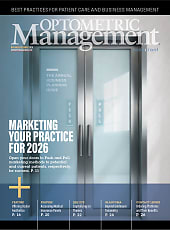Many people and eyecare providers alike live by the “if it’s not broken, don’t fix it” rule. The challenge with that outlook is that it may hinder progress with your contact lens wearing population. Here are some ways to migrate hydrogel wearers into silicone hydrogel (SiHy) daily disposable lenses.
- Engage your listening skills: Almost every patient has some area that can be improved upon with their contact lenses. Start by asking some simple, open-ended questions like, “Is there anything about your lenses that could be improved upon?” or “What would make your lenses even better than they are now?” That said, not everyone wants to change. Often times they are “happy” with their current lenses, but they don’t really know their options and maybe don’t want to pay more for their contact lenses.
- Explain the technology: There are a few easy methods to help patients understand the value and benefits of the newer SiHy daily disposable lenses. First, help them understand that an upgrade can often cost less than staying in an older material. Additionally, remind patients that contact lens technology is evolving—much like cell phones—and we cannot buy the same cell phone as affordably as a brand-new version with the industry support focusing on new products. Simply showing patients that the dollar benefits offered by the company are in line with an upgrade that will benefit their eye health and comfort allows them to make an easy decision.
- Larger supply of diagnostic lenses with SiHy: Finally, have a larger supply of lenses and larger array of powers with the newer products in the office. Long ago, trials or diagnostic lenses were viewed as a free sample. Trials should be offered as a chance to try a new product to ensure fit, handling, or comfort. Once a patient has worn a specific lens, the only time they really need to “try” it again is if the power changes significantly.
In general, the SiHy daily disposable lens modality may be a healthier for patients and allows them to be a successful contact lens wearer as long as they need or want to be. These lenses provide the least amount of disruption to the eye and allow patients to wear the lenses for many years without issue. With the large parameters available, and improved comfort, these lenses simply are the best available to help patients see the best.
This editorial content was supported via unrestricted sponsorship.



